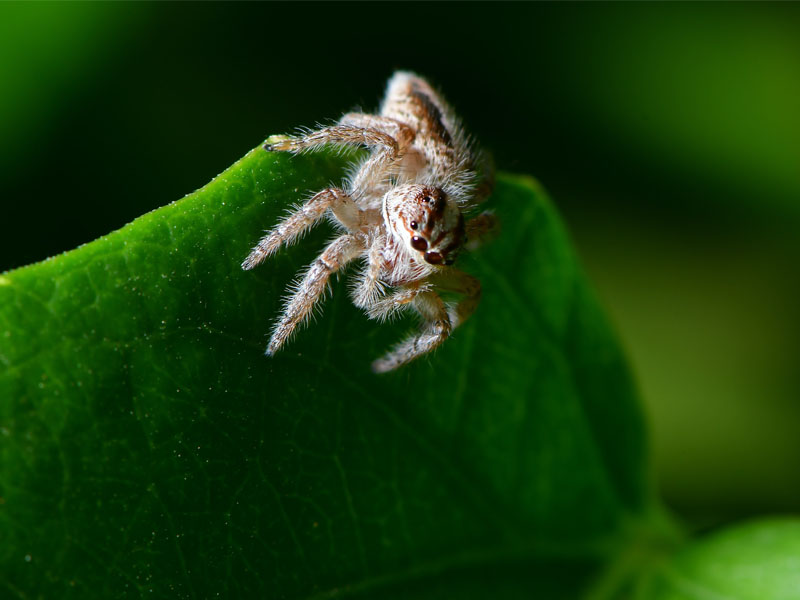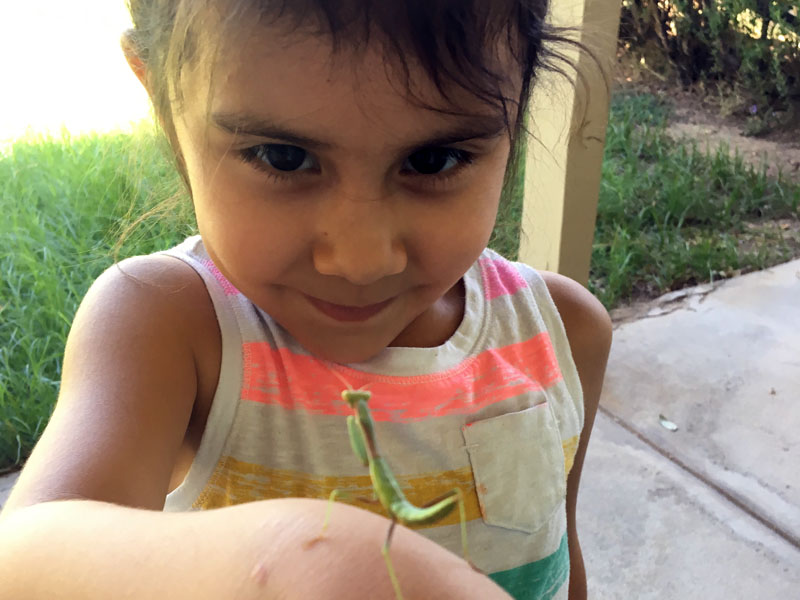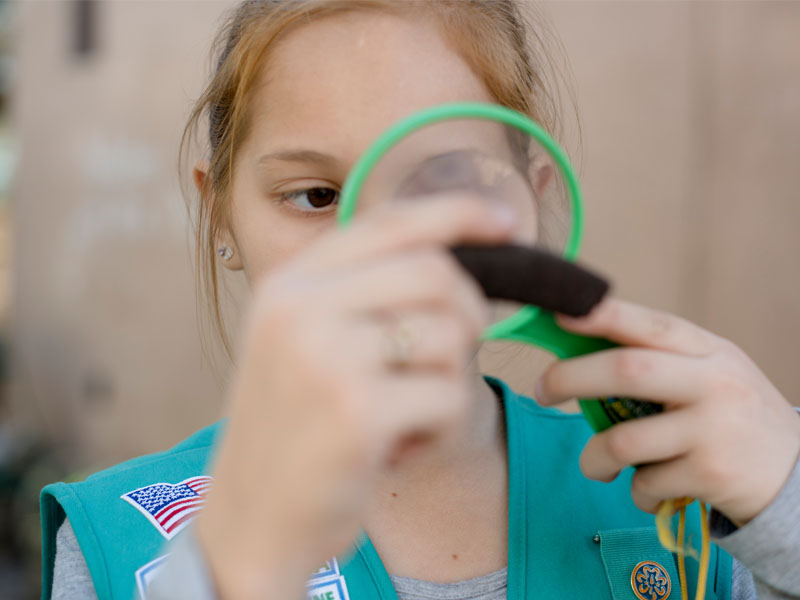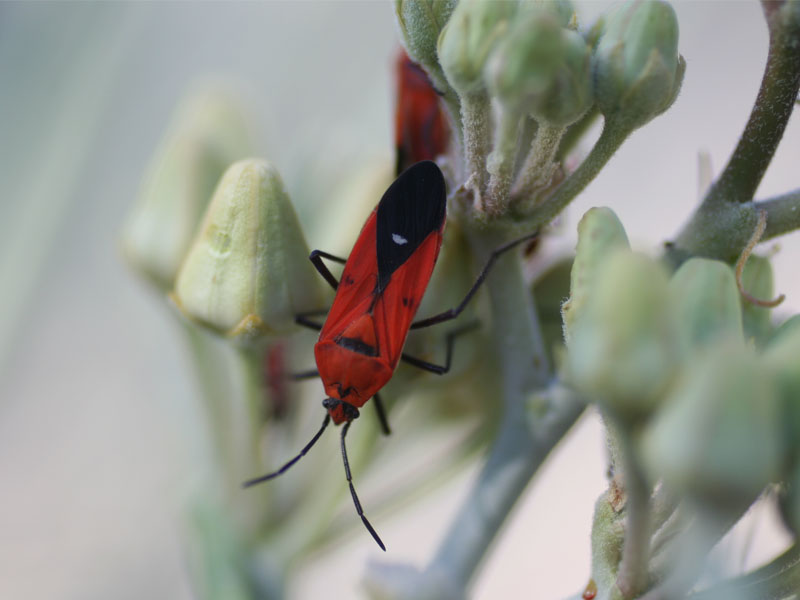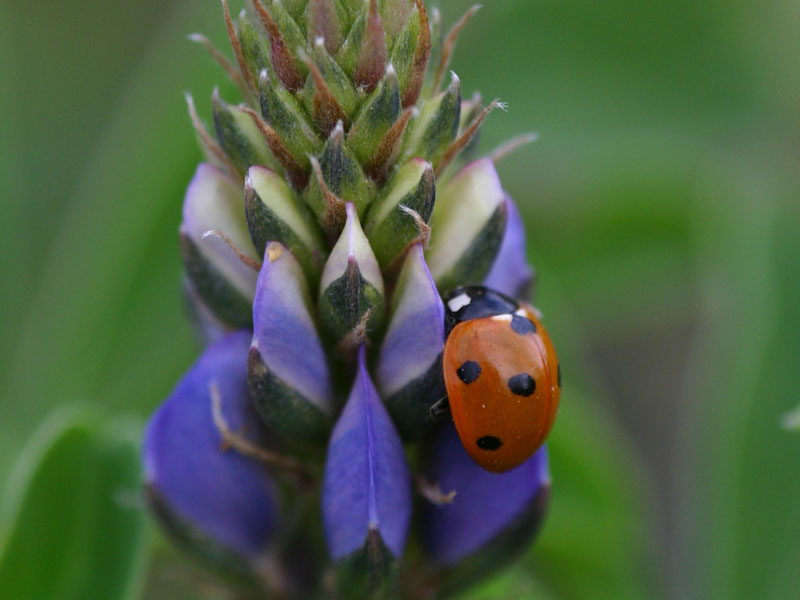Girl Power!
Become an entomologist for the day.
This activity is an opportunity to earn a Girl Scout patch–click here.
As more women receive degrees in science, careers in technology, engineering and math (STEM) are growing. One career that might bug you out is the field of entomology (the study of insects). Insects have six legs, three body sections (head, thorax, and abdomen), and they usually have one or two pairs of wings. Butterflies, bees, beetles, praying mantis, ants and dragonflies are all examples of insects.
There are many fun discoveries to make while learning about bugs. Become a ‘bug scientist’ for a day with this fun activity and discover what it might be like to be an entomologist.
This activity is great for kids 5 and older.
Discover what it is like to be an entomologist by measuring the diversity (differences) and abundance (large quantity) of bugs in their habitat (home).
Are you ready to find bugs? Make sure you’re dressed and ready for an adventure outdoors, which may include sun, rocky soil and even potential stingers.
Materials:
- Measuring Tape
- Yarn or String
- Spoon
- Jar with a lid
- Pencil
- Printable observation sheet (you can also transcribe it onto a sheet of paper)
- Camera (optional)
Directions:
- Go on a walk and identify a habitat you think bugs would like to call home.
- Take note of the following about the habitat on your observation sheet:
- Date and Time
- Description and picture or drawing of site
- Exposure–full sun, part sun or shade
- Nearby plants
- Ground covering—grass, leaf litter, plants, bare soil, rocks, gravel etc.
- Take note of the following about the habitat on your observation sheet:
- Make a Prediction:
- What kind of bugs do you think you will find? How many bugs do you think you will see?
- Pick an area you think bugs may like to live in.
- Use your yarn or string to map out a square of your habitat to survey.
- Measure each side to 3 feet long.
- Start searching for bugs on the top left corner. Move slowly left to right and then down to the next section, as if you were reading lines of text in a book.
- Flip over rocks, remove leaf litter and loose soil or comb through grass to search. Use your spoon to help. If you want to take a closer look at a bug you find, you can scoop it into your jar temporarily.
- Tally the number of bugs found.
- If you are able to identify categories of bugs (ants, beetles, spiders, etc.,) tally them. Only record bugs inside your square.
- How does your original prediction of the number and kinds of bugs compare to your results? Repeat this process as many times as you would like.
- Analyze your findings.
- Which site had the highest abundance of bugs or recorded the highest number of individual bugs?
- Compare and Contrast.
- Which had the most diversity or recorded the most different kinds of bugs? Compare your site description notes. Is there a difference? Are there any similarities?
Extension Activities:
- Create an insect with found natural materials and label the six traits of true insects
- Make an insect hotel to see what kind of ground and flying bugs live in your area
- Plant a native plant for your insect to enjoy
- Experiment with different bug snacks like sugar water or protein to see which species may be attracted
- Make a pitfall trap to see what kind of ground bugs live in your area
- Pretend you are a bug and draw any object around you from their perspective
